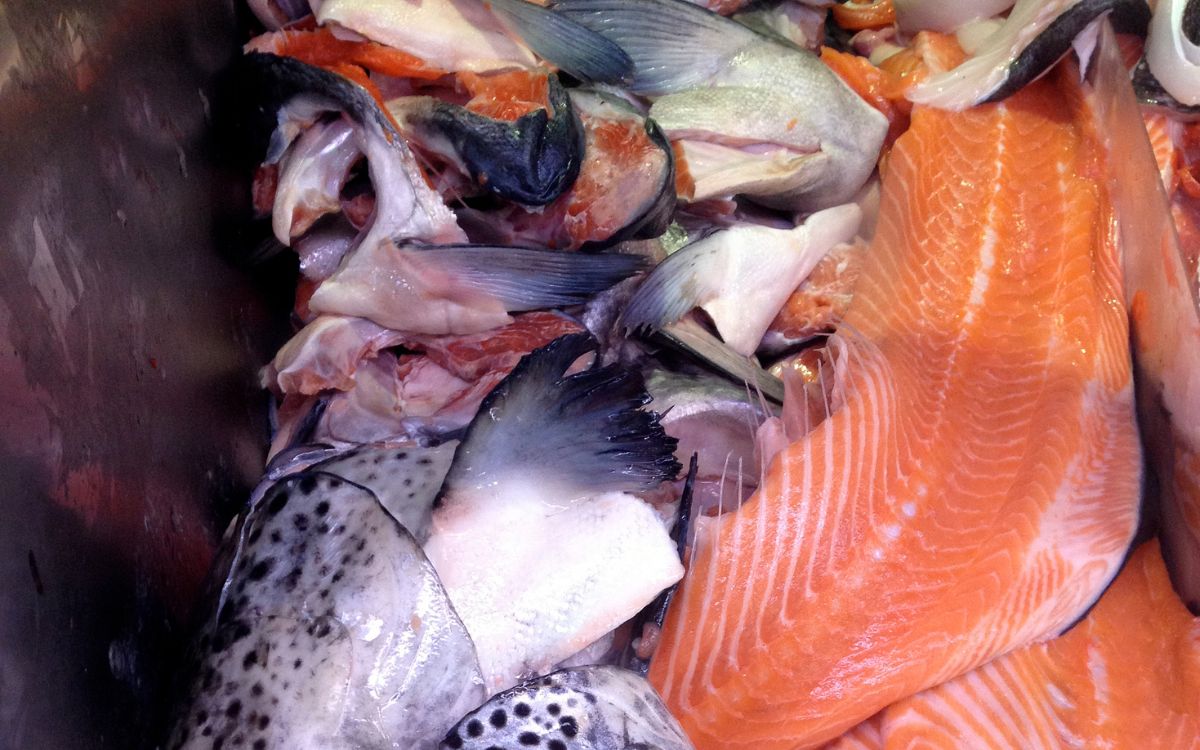Privacy Policy | Terms and Conditions | Disclosure Statement | License Policy
COPYRIGHT © 2024 | NUMBER 8 COOKING | ALL RIGHTS RESERVED.

Privacy Policy | Terms and Conditions | Disclosure Statement | License Policy
COPYRIGHT © 2024 | NUMBER 8 COOKING | ALL RIGHTS RESERVED.

Privacy Policy | Terms and Conditions | Disclosure Statement | License Policy
COPYRIGHT © 2024 | NUMBER 8 COOKING | ALL RIGHTS RESERVED.
Welcome to our world of culinary mastery, where we share my recipe for mastering fish stock at home and the insider tips you should know. The essence of the ocean will take your seafood dishes to a whole new level of excellence.
Suppose you’ve wondered how top-tier chefs infuse their seafood dishes with rich, robust, almost magical flavors. Well, you’re in luck. We will reveal the key ingredients and secrets to making delicious homemade fish stock.
ADVERTISEMENT CONTENT BELOW
This chef’s guide to mastering fish stock is your opportunity to learn from the best. I’ve been cooking my fish stock recipe for decades, so I know how to extract maximum flavor from a few simple ingredients.
Mastering fish stock is all about the ingredients and techniques you use. There is something special about recreating our fish stock recipe at home.
You can recreate those gourmet flavors that upscale restaurants achieve in the comfort of your kitchen. The foundation of many exceptional dishes like seafood chowders, casseroles, and velouté sauce often begins with a well-crafted fish stock.

ADVERTISEMENT CONTENT BELOW
In the pursuit of mastering fish stock at home. Understanding the components that make up this essence of the ocean is essential. The quality and combination of ingredients can make or break the stock, and as any seasoned chef will tell you, it’s the attention to detail.
Fish Frames — Steal the spotlight when mastering fish stock. Crucial, cost-effective, and indispensable. Use a variety of fish frames, tails, and bones. These impart depth and richness to the stock. Consider adding prawn, shrimp, or lobster shells for added complexity. They are relatively cheap or free if you talk to the right people.
Chefs Pro Tip — I skip using fish heads in my stock to keep it clear. The eyes can dissolve and make it cloudy.
Flavor Enhancers — Aromatic vegetables like onions, carrots, celery, and leeks form the flavorful mirepoix. They provide the base flavor notes for mastering fish stock.

The Aromatics — Beyond the basics, additional aromatics like garlic, peppercorns, bay leaves, thyme, sage, and parsley can take your stock to the next level. These elements provide the complexity and depth of flavor that distinguishes restaurant quality fish stock. Meanwhile, star anise, fresh lemon juice, or fennel seeds offer a unique twist.

The Role Of Liquid — Cold water and reduced white wine create a foundation with a subtle fruity acidity. Though optional, wine is recommended for an extra layer of complexity.
By understanding these components, you’ll be better equipped to master fish stock. You’ll reach restaurant quality standards and unlock a world of gourmet possibilities.
Experience the simplicity of clear fish stock with our fail-proof method. No roasting or browning is required. This easy-to-follow method requires minimal simmering, ensuring success every time. Build your culinary prowess with this foundational technique to mastering fish stock and opening doors to countless gourmet dishes.
ADVERTISEMENT CONTENT BELOW
Prepare Fish Frames — Wash the frames under cold water to remove blood or leftover offal. Place them into a large, heavy-based pot. Consider adding prawn shrimp shells or lobster shells for added complexity.

Create the Mirepoix — Combine roughly chopped onions, carrots, celery, and leeks. Place them into the pot with the fish frames.

Add Aromatics — Add garlic, peppercorns, bay leaves, fresh thyme, and parsley to the pot. I’ve experimented with star anise, fresh lemon juice, or fennel seeds for a unique taste. These will add underlying flavors that pop the finished stock.
ADVERTISEMENT CONTENT BELOW
Cold Water And Wine — Use cold water as the primary liquid. Add enough to cover the ingredients. Add 1 cup of reduced white wine.
Chefs Pro Tip — Reducing the white wine burns off the alcohol, preventing the fish stock from tasting bitter.
Simmer With Precision — Bring the stock to a gentle simmer, avoiding a rolling boil, which can cloud the stock. Simmer for 30-45 minutes.
Chefs Pro Tip — Fish frames are delicate. Simmering the stock too long will cause the frames to break apart. This will make the stock cloudy.

Skim And Strain — Regularly skim off impurities that rise to the surface during simmering. Strain the stock through a fine mesh sieve or cheesecloth to achieve clarity.
Cool And Store — Use the fish stock within 2-3 days. I then place it into snap-lock bags and freeze it for later use. That way, I’ve got restaurant worthy fish stock on hand.
ADVERTISEMENT CONTENT BELOW
Cooking is a science and a skill that requires a deep understanding of both the technical and creative aspects. Cooking is also a matter of precise measurements and ratios.
For example, baking is particularly sensitive to accurate measurements and temperatures. A slight deviation in the amount of an ingredient or cooking degrees can result in a completely different outcome. So, to help you, here is a handy little unit converter tool for cooking without guesswork.

DISH SUMMARY




This recipe and its accompanying photographs are protected by copyright. While we encourage you to share or link back to this recipe. We ask that you do not copy and paste the full recipe onto social media or your blog.